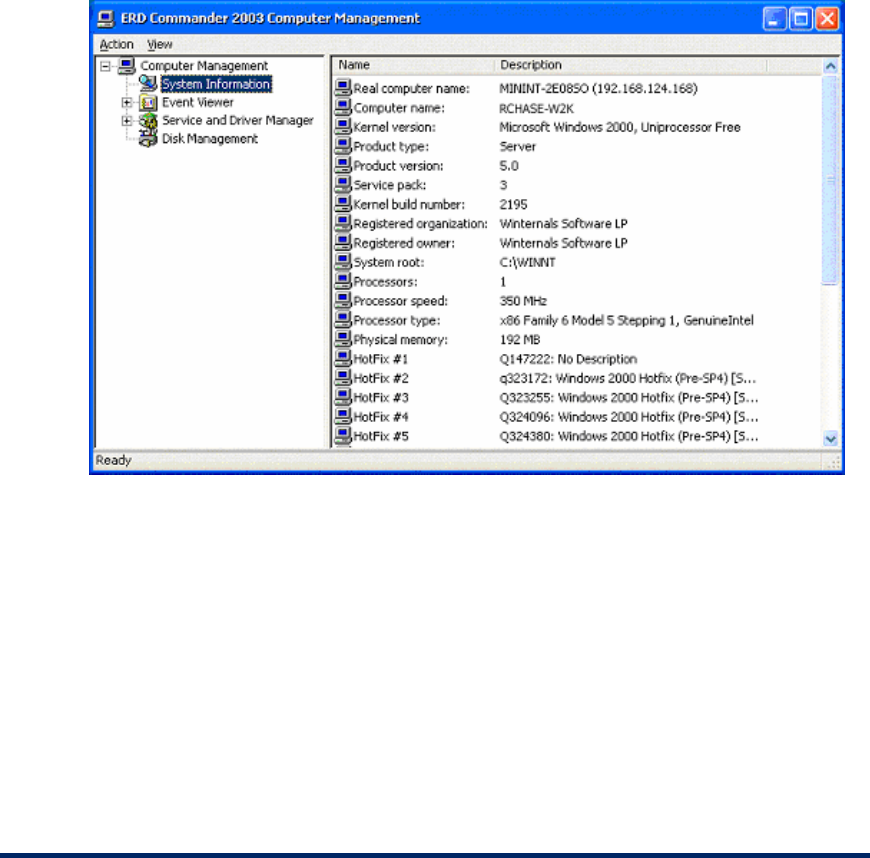User Guide
Table Of Contents
- Introduction
- ERD Commander 2003 Setup
- Using ERD Commander 2003
- Logon
- Windowing Shell
- System Information
- Explorer
- Volume Properties
- Folder Properties
- Resetting Permissions
- Mapping Network Drives
- Adding a Domain
- Using File Search
- Using FileRestore
- Command Prompt
- Chkdsk
- Diskpart
- Regsvr32
- Notepad
- Regedit
- Using Service and Driver Manager
- Using Event Log Viewer
- Filtering Events
- Using TCP/IP Configuration
- Using Disk Management
- Locksmith
- File Sharing
- System Restore
- System Compare
- Running External Commands
- Disk Commander
- Frequently Asked Questions
- Sales
- Technical Support
- Index

ERD Commander 2003
User’s Guide
3.3 System Information
The ERD Commander 2003 System Information utility is accessed via the
Administrative Tools folder of the Start menu. The utility reports extensive
information about the system you are repairing, including the operating
system version, service pack, hotfixes, registered owner and organization
and more. It also displays the installation’s computer name as well as the
computer name (listed as the "Real computer name") that ERD Commander
2003 randomly assigns while it is running. The value of the System root,
which represents the root folder of the installation, can be useful to determine
where key system files, such as service and driver files and Registry hives,
reside.
Winternals Software Page 23










